
With growing interest in commercial spaceflight and NASA’s Artemis mission to send the first humans to Mars, addressing the short-term and potential long-term health issues that astronauts may face has become increasingly critical. Astrobiology contributes to this research. Over the past few years, our student-led team conducted a wide range of space biology projects, including sending a payload to the International Space Station to study how microgravity affects bacterial resistance to antibiotics, collaborating with NASA’s Biotechnology and Planetary Protection Group to investigate the antimicrobial properties of zinc oxide in microgravity, and partnering with the Mason Lab at Weill Cornell Medicine and the Church Lab at Harvard to explore the role of dysfunctional mitochondrial transfer in spaceflight-induced anemia. We also led a city-wide study on bacterial load across the New York City subway system. In the past year, we completed the design and assembly of a 3D clinostat to simulate microgravity conditions and developed a system to automate the delivery of biological samples into RNAlater™
Analyzing the impact of Californium-252 irradiation on the phenolic content of Extra Dwarf Pak Choi seedlings
Conducting a mechanistic study on the interactions of immune and fibroblast cells in a microgravity environment,
Re-designing our current clinostat design to more accurately simulate microgravity for cell cultures
Wet-Lab Techniques
Cell/Tissue-Culture
Biochemicals Assays
RNA/DNA Isolation and Analysis
Transcriptomics Analysis
Data Analysis/Statistics
CAD & 3D-Printing
Circuitry & Soldering
Scientific Writing
The Astrobiology mission spent the academic year learning about spaceflight and its effects on biological systems–namely, spaceflight-induced anemia and decreased bone density due to long-term exposure to microgravity.
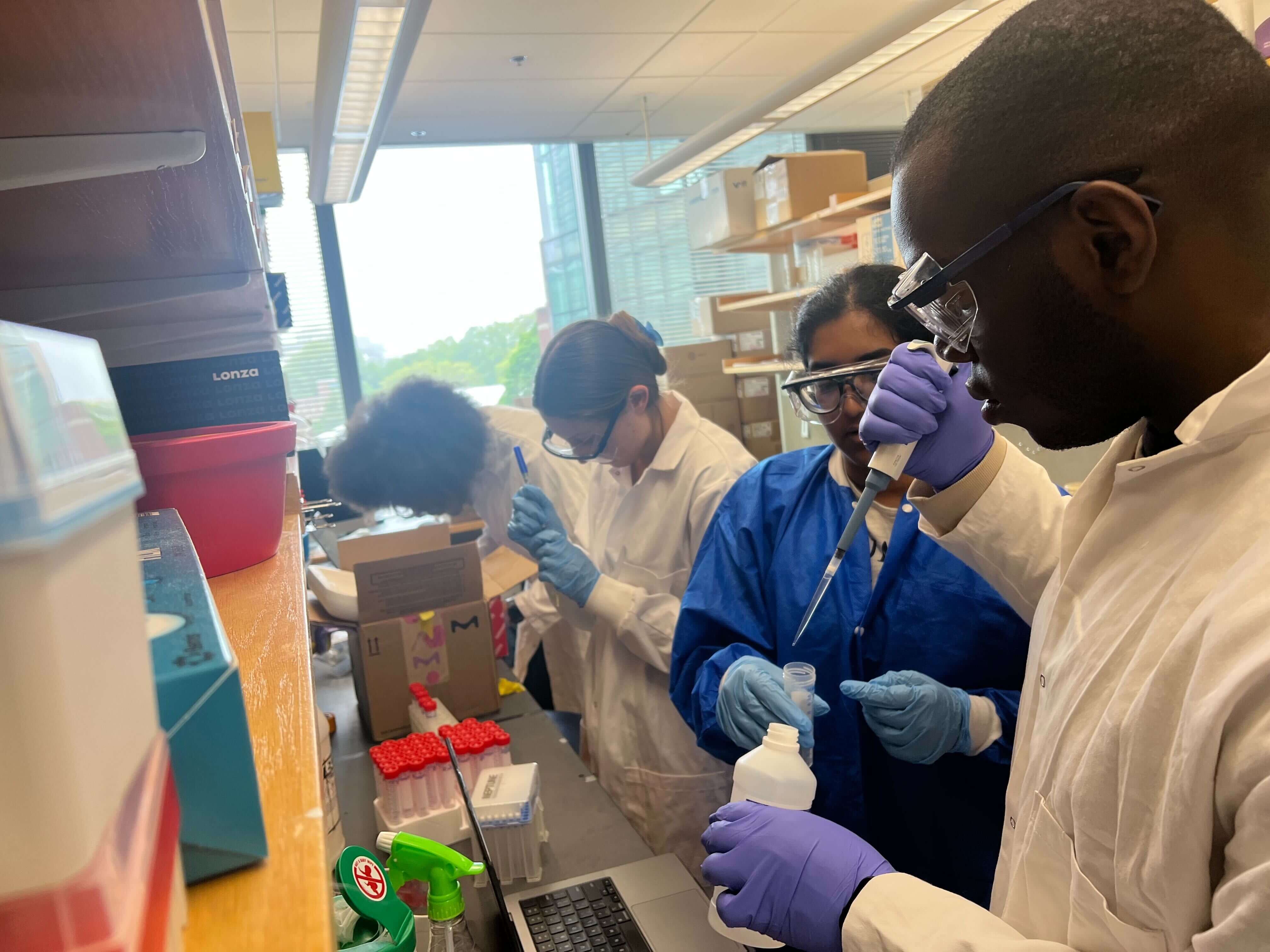
The project aimed to identify changes in the quantity of genetic material pre- and post-exposure to microgravity. To achieve this, the team designed, prototyped, and implemented their own in-flight hardware, which allowed for a timed release of DNA/RNA preservative into HeLa cells for further extraction, isolation, and quantification.
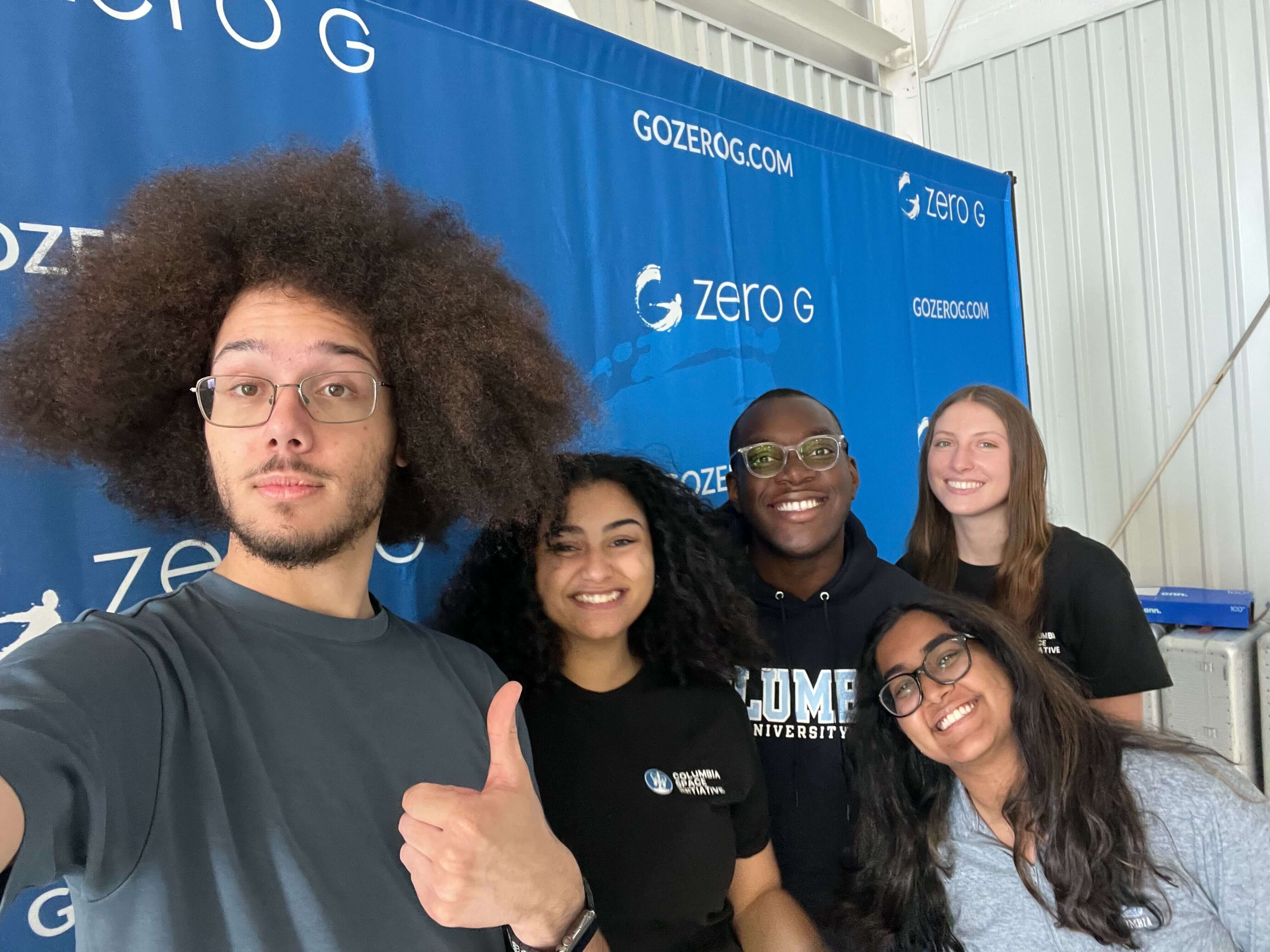
From May 17th to May 24th, the team took their samples to Boston to collaborate with the George Church Lab at Harvard, and to New Hampshire to work with Weill Cornell’s Dr. Christopher E. Mason for an authentic microgravity experience via the Aurelia Institute and their parabolic flight programming.
See below for a selection of pictures from their visits.
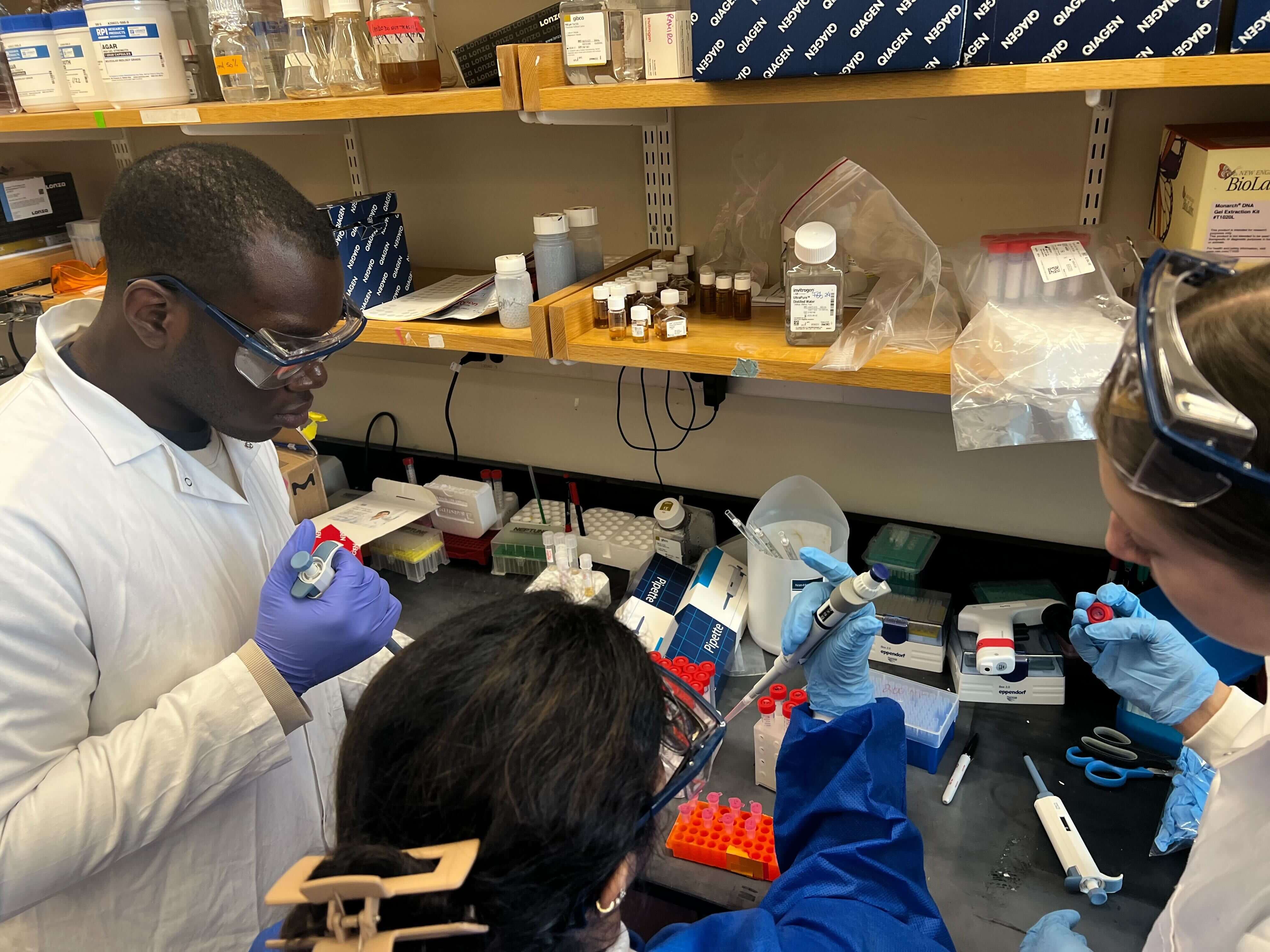
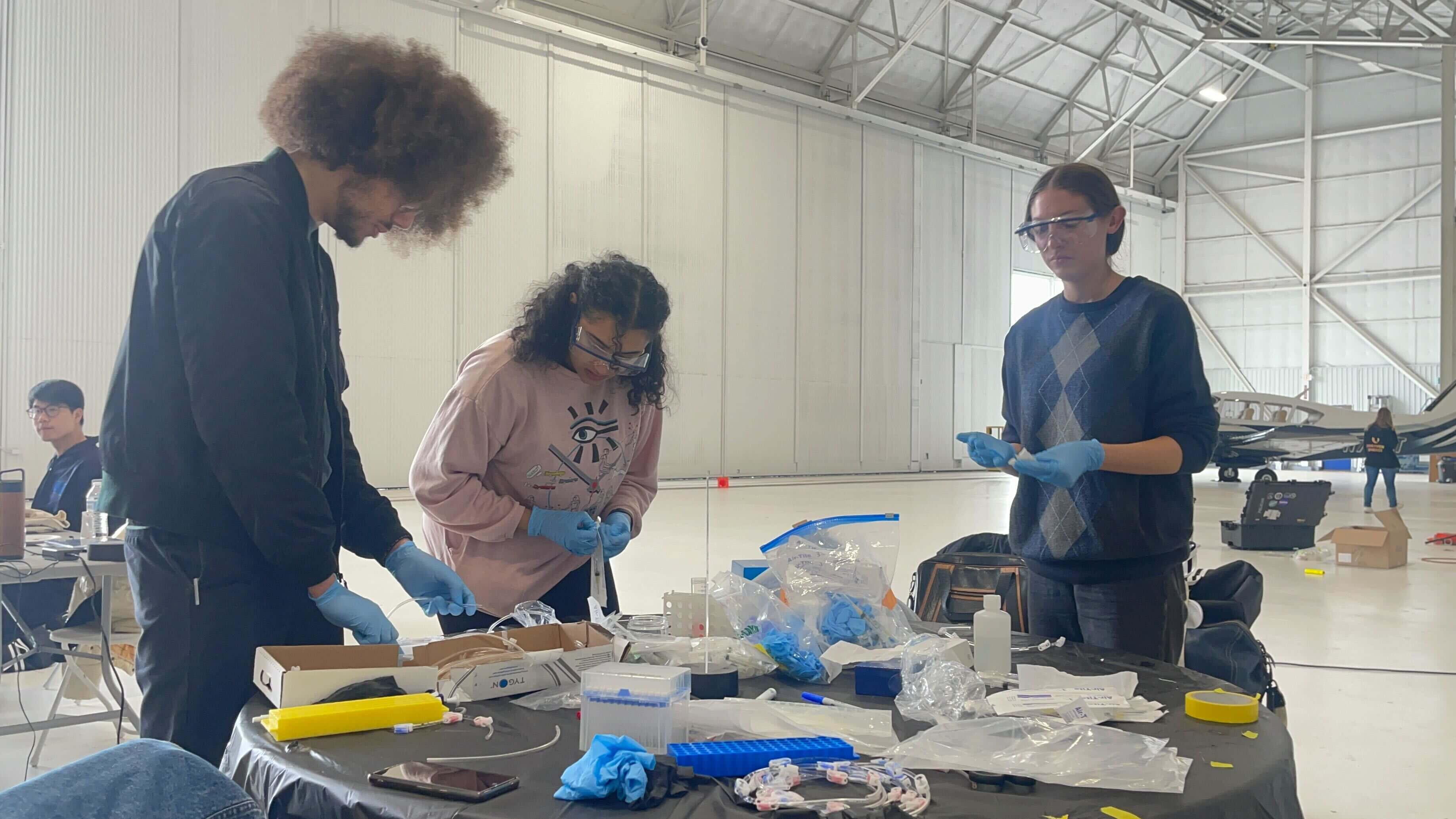
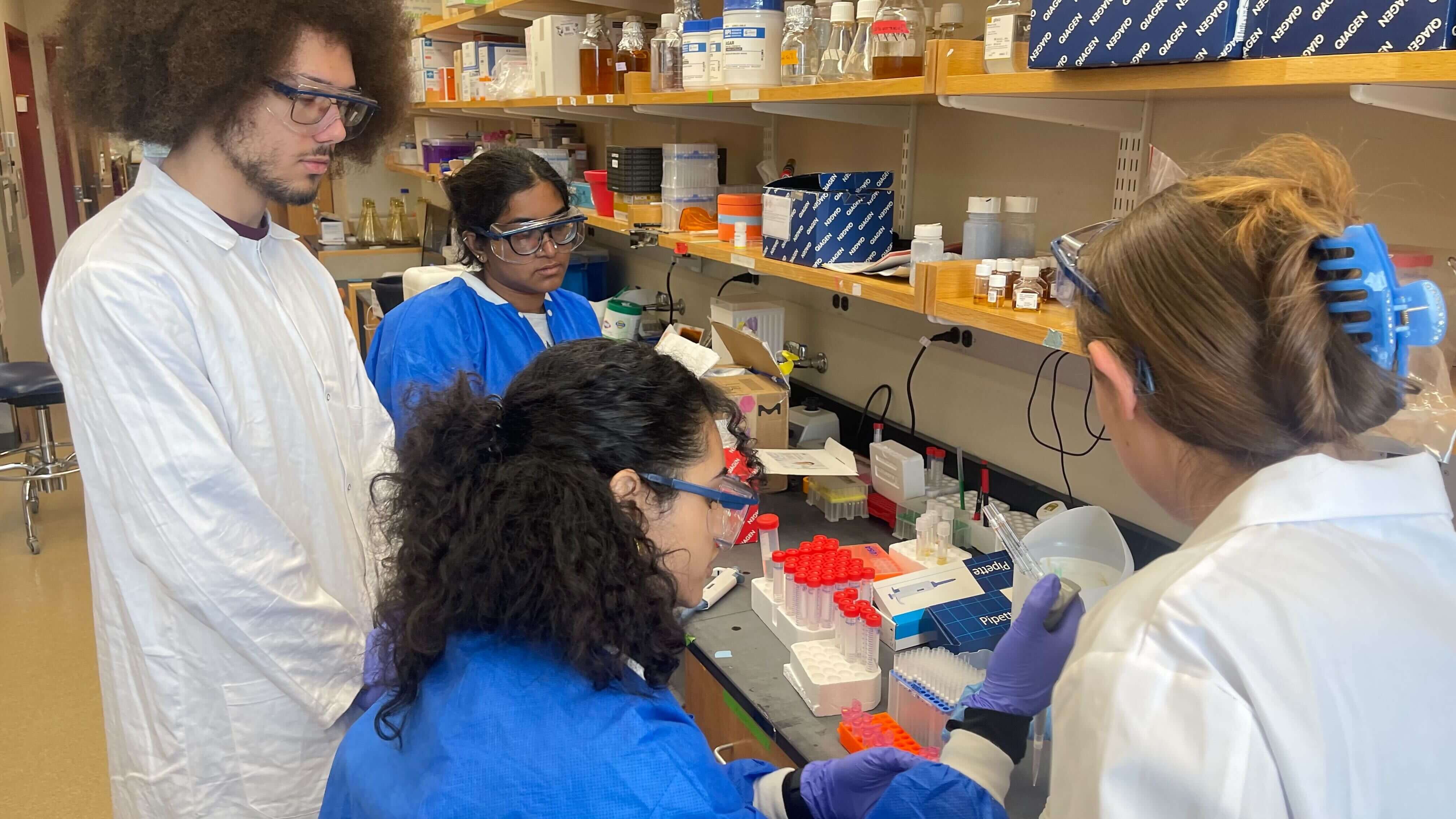
A special look into the Space Microbiology’s visit to NASA’s Jet Propulsion Laboratory (JPL)!
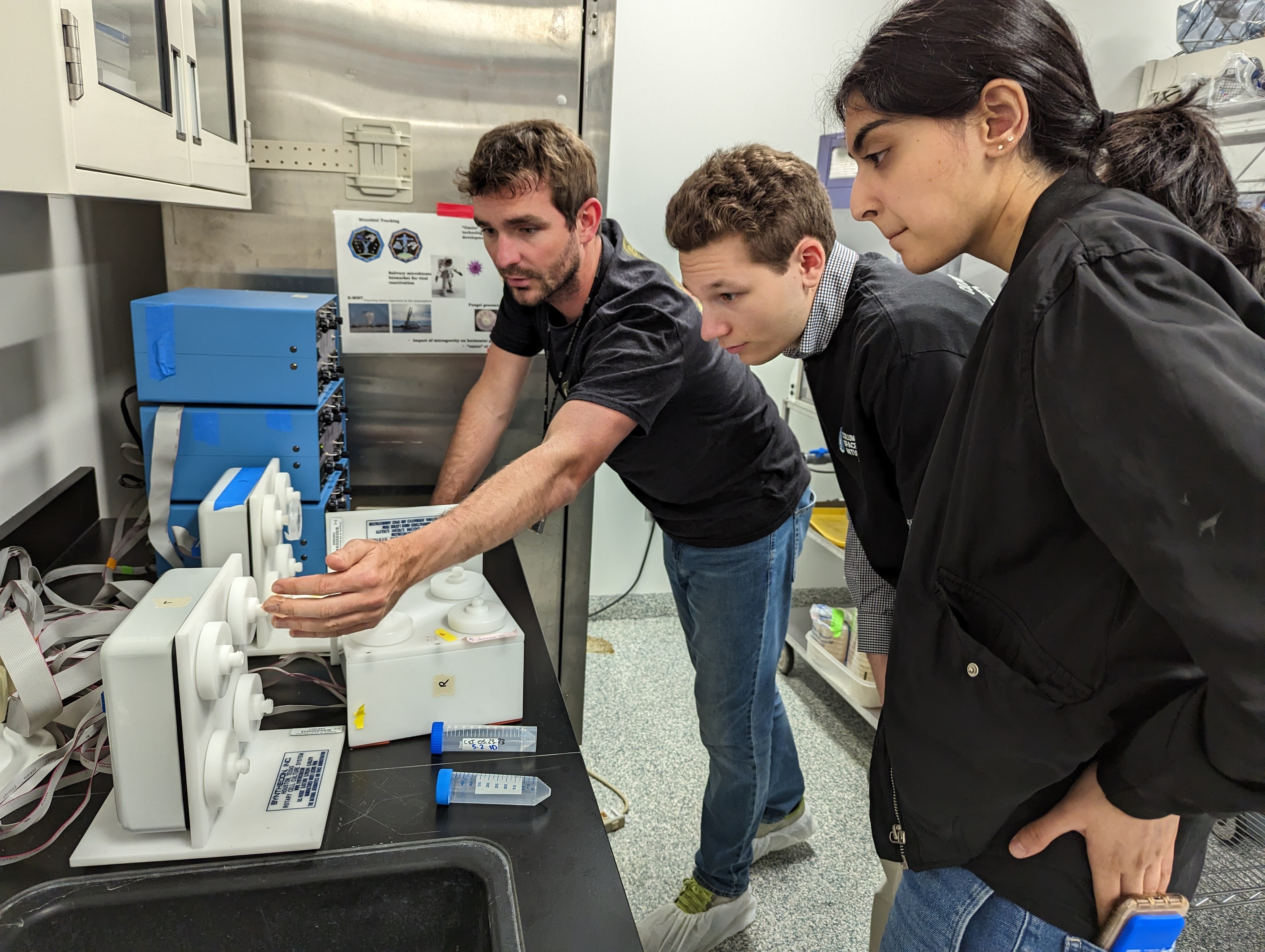
Host Dr. Ceth Parker, and Space Microbiology Co-Leads Miriam Aziz and Theodore Nelson, inspect the rotary cell culture system (RCCS) from Synthecon, one of the 2D ‘simulated microgravity’ clinostats.
From left to right: Dr. Ceth Parker, Theodore Nelson, Miriam Aziz
Image courtesy of Jake Lee
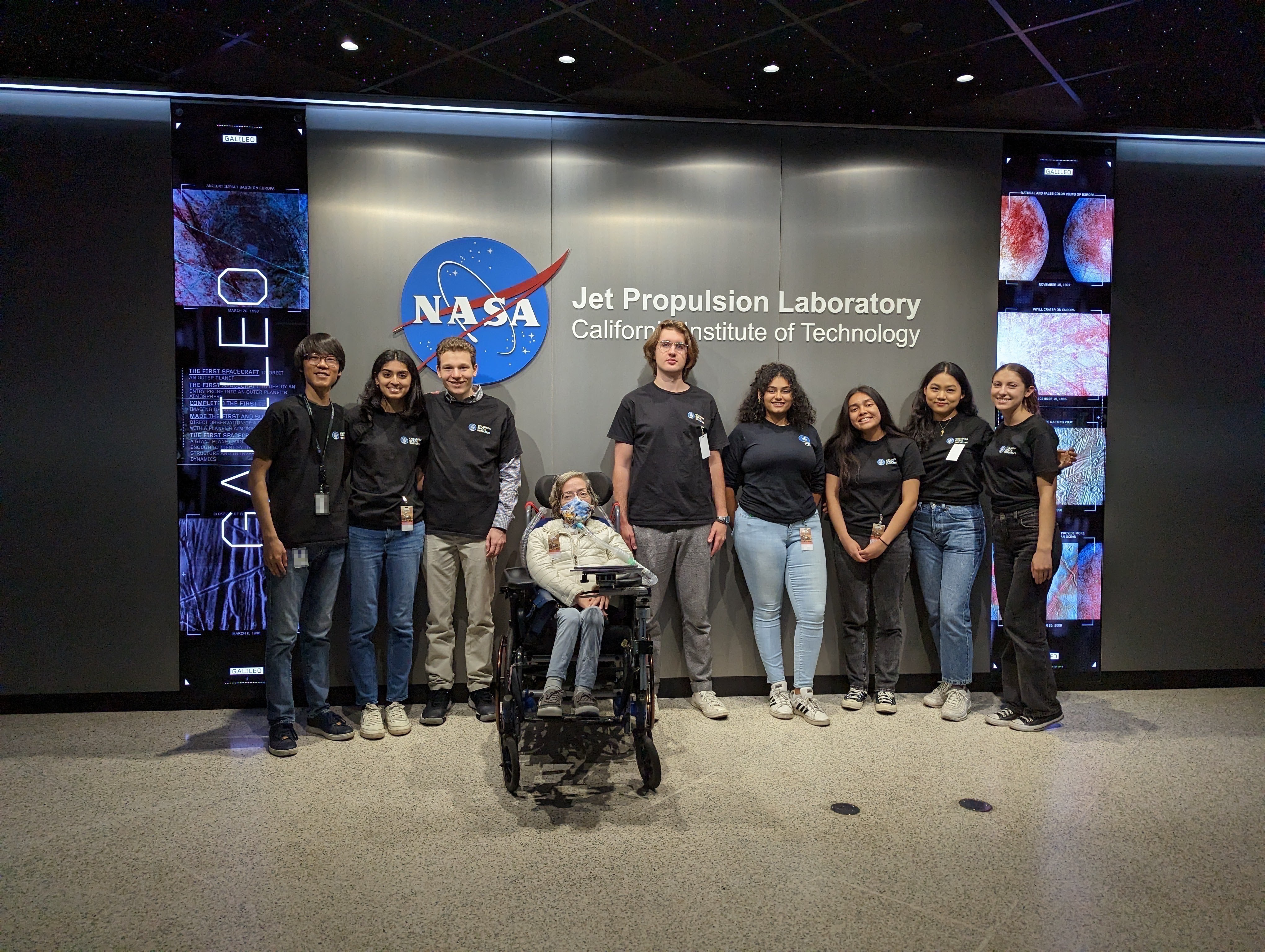
JPL Escort Jake Lee and the Space Microbiology Team pose for a photo in the lobby of the Mission Control Center at NASA JPL.
From left to right: Jake Lee, Miriam Aziz, Theodore Nelson, Michelle Brose, Błażej Raszewski, Chloe Jones, Rashell Ramirez, Somin Lee, Brianna Przywozny
Image courtesy of Jake Lee
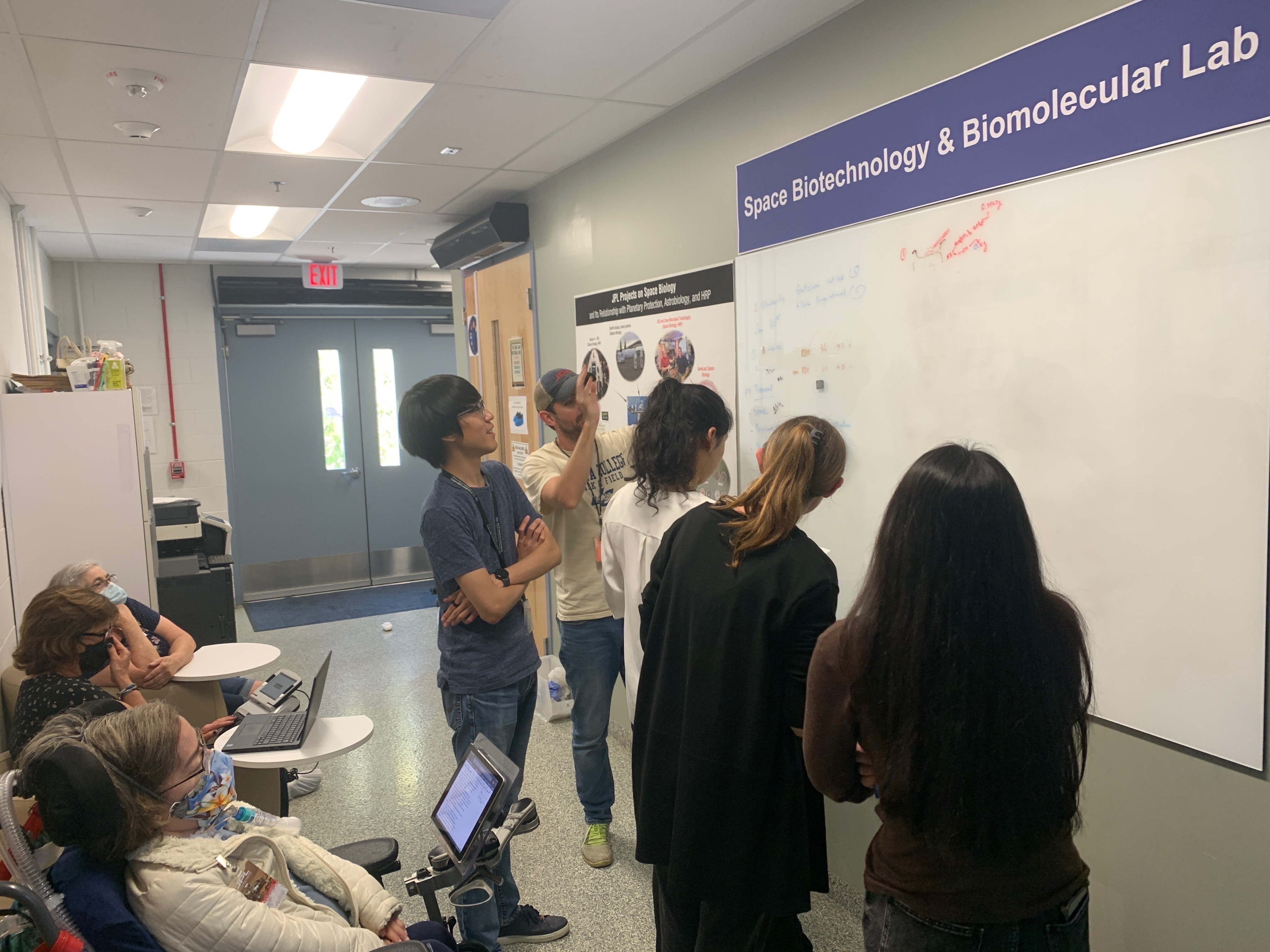
Host Dr. Ceth Parker, and Space Microbiology Team Members Somin Lee, Michelle Brose, Brianna Przywozny, and Rashell Ramirez outline the planned zinc oxide formation experiment on the whiteboard.
From left to right: Michelle Brose, Jake Lee, Dr. Ceth Parker, Somin Lee, Brianna Przywozny, Rashell Ramirez
Image courtesy of Miriam Aziz
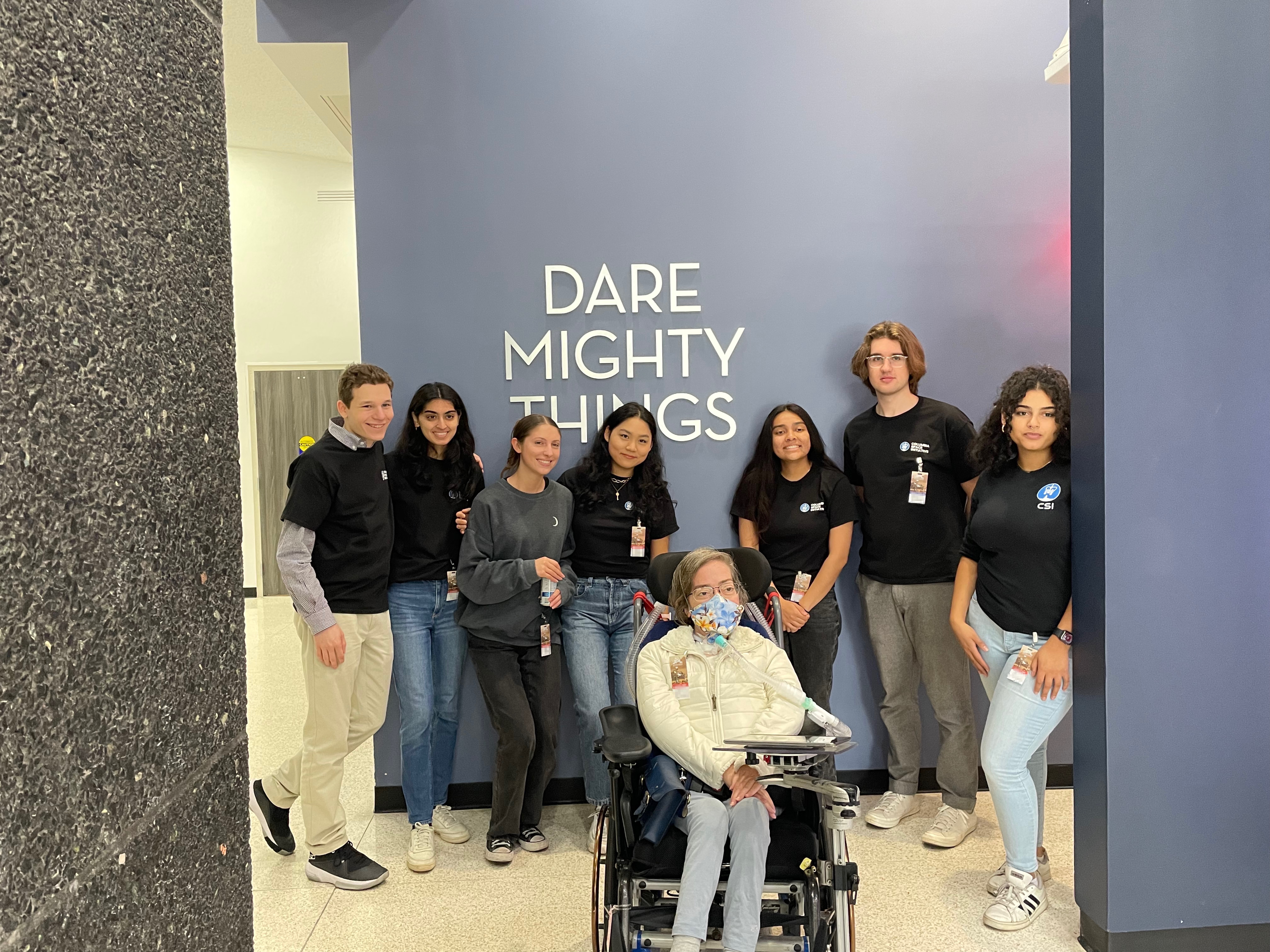
The Space Microbiology Team poses in front of a sign that reads ‘Dare Mighty Things!’ a slogan associated with NASA’s rover missions to Mars.
From left to right: Theodore Nelson, Miriam Aziz, Brianna Przywozny, Somin Lee, Michelle Brose, Rashell Ramirez, Błażej Raszewski, Chloe Jones
Image courtesy of Theodore Nelson
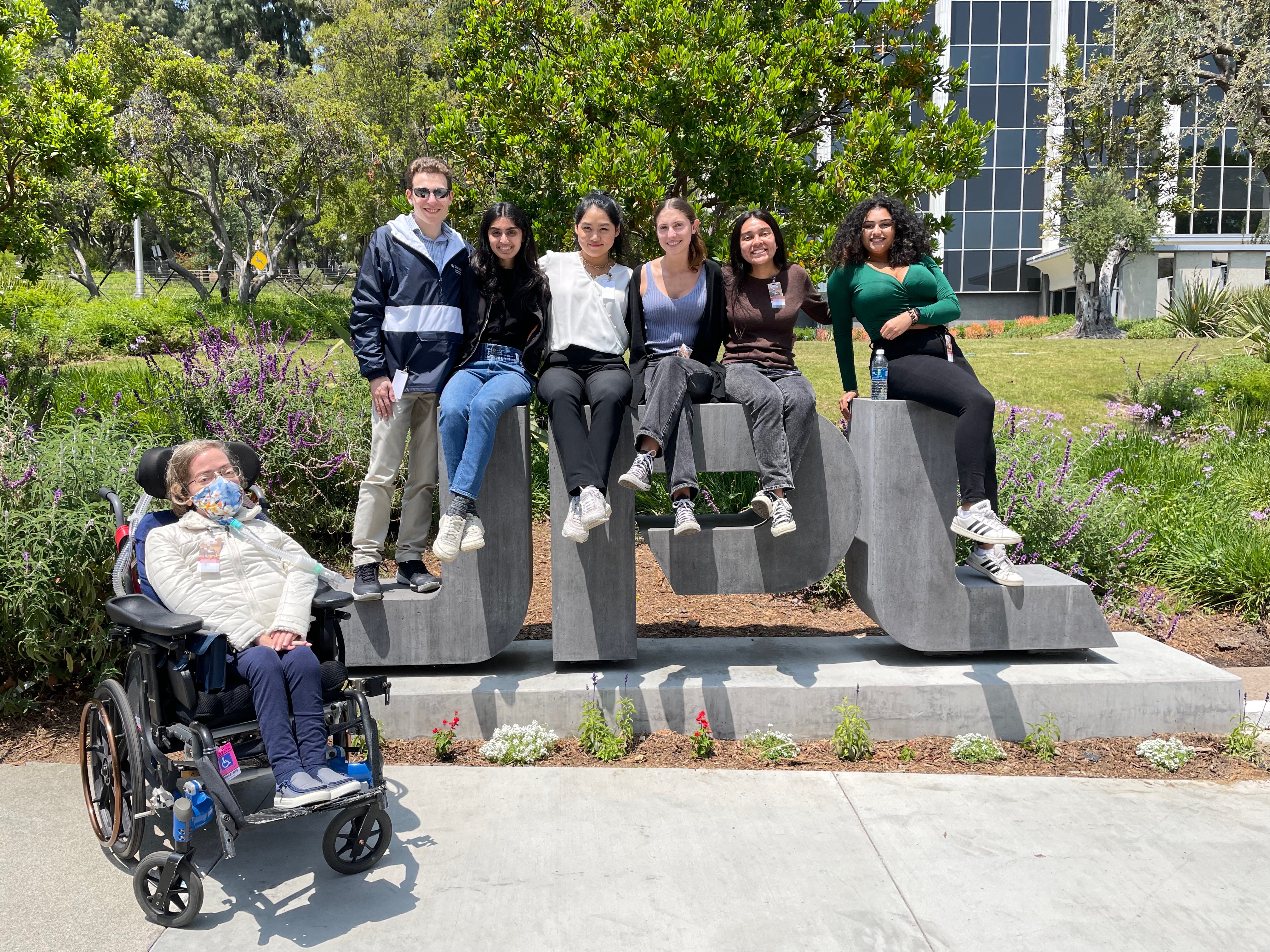
The Space Microbiology Team poses in front of the stone JPL sign at the entrance to the campus.
From left to right: Michelle Brose, Theodore Nelson, Miriam Aziz, Somin Lee, Brianna Przywozny, Rashell Ramirez, Chloe Jones
Image courtesy of Theodore Nelson
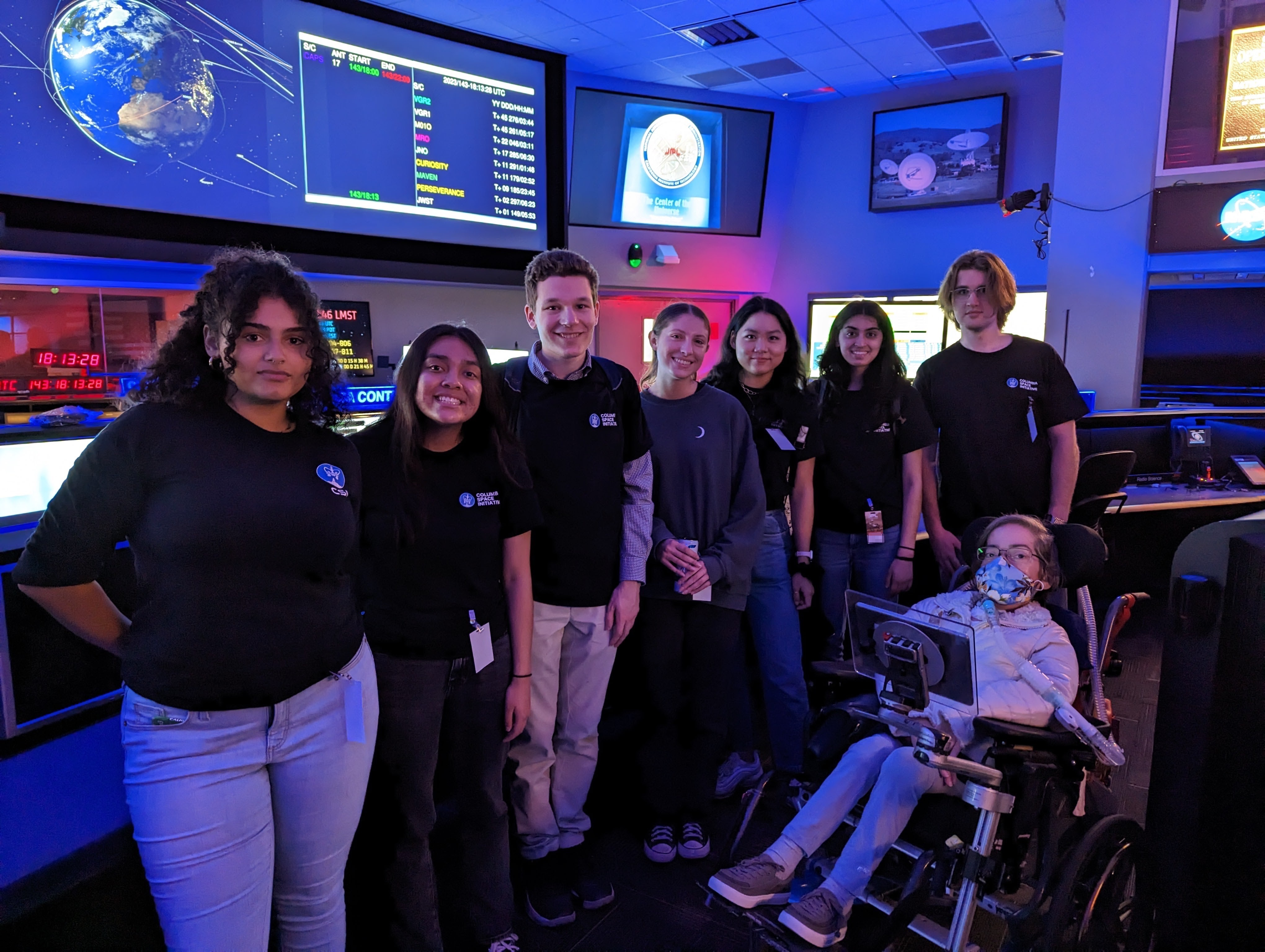
The Space Microbiology Team poses inside the JPL Mission Control Center.
From left to right: Chloe Jones, Rashell Ramirez, Theodore Nelson, Brianna Przywozny, Somin Lee, Miriam Aziz, Błażej Raszewski, Michelle Brose
Image courtesy of Jake Lee